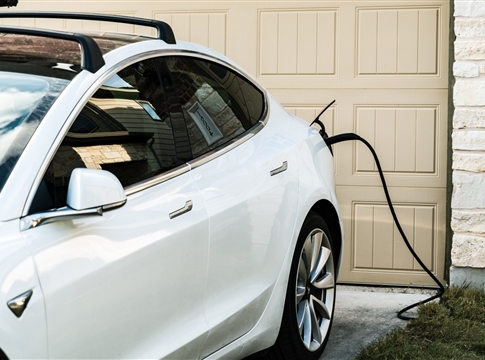Related News
Related News
-
Sustainability Snapshot - Celebrating Energy Efficiency Projects in the Community
Sustainability Snapshops highlight impactful projects completed by EWEB's Customer Solutions department, as a way to celebrate the meaningful work happening behind the scenes.
Find Out More -
EWEB secures $2.5 billion of reliable, affordable, carbon-free energy for customers
The new contract with EWEB’s largest energy supplier, the Bonneville Power Administration, forms the foundation of a diverse energy portfolio.
Find Out More -
EWEB Hometown Heroes compete internationally
Out of 290 teams from 14 different countries, EWEB's Lineman Rodeo team places in the top third of competitors.
Find Out More -
EWEB completes helicopter installation of salmon habitat features
EWEB adds downed trees and 2,000 tons of gravel to the Uupper McKenzie River below Tamolitch Falls to improve spawning habitat.
Find Out More -
Court rules in favor of EWEB in Carmen-Smith litigation
The U.S. District Court in Eugene has granted EWEB's motion to dismiss a lawsuit brought under the Endangered Species Act pertaining to fish passage at EWEB’s Trail Bridge Dam. The favorable ruling clears the way for EWEB to continue advancing towards implementation of permanent fish passage at the dam.
Find Out More -
EWEB proposes modified plan for permanent fish passage at Trail Bridge Dam
After eight months of extensive collaboration and analysis with scientific experts at two federal regulatory agencies, EWEB is proposing an improved plan to build permanent fish passage facilities at Trail Bridge Dam on the McKenzie River.
Find Out More -
Sustainability Snapshot - Ideal Steel July 2025
Our second Sustainability Snapshop highlights a project where EWEB helped a local industrial warehouse upgrade over 1,000 flourescent lights to new efficient LEDs.
Find Out More -
EWEB prepares for wildfire season with risk mitigation measures
EWEB is building a more resilient electric system to weather various types of disasters, from wildfire to winter storms.
Find Out More -
Improving habitat resiliency throughout the Upper McKenzie
Environmental Responsibility is a core guiding value for EWEB decision-making. This summer, EWEB continues its commitment to environmental stewardship with a robust slate of habitat enhancement updates throughout the upper McKenzie River, across the footprint of the Carmen-Smith Hydroelectric Project.
Find Out More -
EWEB weighs multi-billion-dollar decision affecting energy supply
EWEB is weighing energy supply decisions that will cost nearly $2 billion over the next two decades.
Find Out More -
EWEB opens applications for 2025 Electric Mobility Community Grant
The Eugene Water & Electric Board is now accepting applications for the 2025 Electric Mobility Grant, reinforcing EWEB's commitment to sustainability and cleaner transportation.
Find Out More -
Greenpower subscribers vote to award Greenpower Grant to SquareOne Villages
The Greenpower Grant, funded solely by voluntary customer subscriptions, supports local sustainability projects.
Find Out More -
EWEB reaffirms commitment to resilience with Wildfire Mitigation Plan approval
The utility is testing new equipment, leveraging technology, and incorporating third-party expertise to bolster electric system resiliency to a range of threats, including wildfire.
Find Out More -
Vote now for the winner of the 2025 Greenpower Grant
Get ready to cast your vote for the winner of the 2025 Greenpower Grant. EWEB is excited to announce the eligible candidates for this year's grant award! The winner of the Greenpower Grant will be voted on by Greenpower subscribers. Learn more about each origanization and their proposal before casting your vote.
Find Out More -
How EWEB’s Fleet Services reached 200,000 hours without a lost time injury
EWEB’s Fleet Services team reached a major safety milestone: 200,000 work hours without a workplace injury that results in an employee losing at least one full day of work.
Find Out More - Show More
The importance of managed electric vehicle charging explained
October 18, 2023 • Aaron Orlowski, EWEB Communications

EWEB supports the electrification of the transportation sector to reduce greenhouse gas emissions, especially since transportation is the largest source of emissions in Eugene. EWEB calculates that by 2040, EV adoption could cut Eugene's total carbon emissions by almost 40%. And, EWEB offers incentives that support the installation of charging infrastructure that enables managed charging.
EWEB’s electricity is about 90% carbon-free, but the exact percentage varies hour to hour, day to day and year to year, depending on multiple factors. One crucial factor is the level of demand for electricity. High overall demand can mean higher emissions and that EWEB has to get electricity from the relatively dirty wholesale electricity market.
EWEB has much to handle related to EV charging infrastructure. To ensure that the switch from gasoline-powered vehicles to electric vehicles reduces the most emissions possible at the lowest cost possible, we need to implement managed EV charging. Most of the time, this will mean charging your EV overnight between 10 p.m. and 6 a.m. so it can charge when demand for electricity is lowest.
At the same time, a robust public charging network will be necessary to allow people without home charging to still charge their vehicles. To support this mix of charging options, EWEB has a variety of rebates for homes and businesses, including apartment complex owners, and public locations. The funding for these rebates is made possible through the Oregon Clean Fuels Program.
- A $500 rebate for a Level 2 home charging station.
- A $1,500 per-port rebate for public Level 2 fast charging at businesses, workplaces, fleet yards and multifamily housing complexes.
- A $2,000 per-port rebate for multifamily affordable housing sites
- A $10,000 per-station rebate for public single-port direct current fast charging stations.
- A $15,000 per-station rebate for new multi-port direct current fast charger stations.
Level 1, Level 2 and DCFC? What do they mean?
EV chargers fall into several categories that differ based on the rate that they consume energy to charge your vehicle. Level 1 has the lowest electrical output. A direct current fast charger (DCFC) has the highest.
Level 1: These can plug into a standard 120V electrical outlet. No special setup is required, but it can take up to 24 hours to fully charge the battery.
Level 2: These use 240V electric outlets, so they can charge your EV much quicker. These also usually come with software that can enable the EV user to mange the charging by, for instance, setting a timer to delay charging until overnight.
Direct current fast charger (DCFC): Also called Level 3, are currently mostly used for light-duty corridor charging and secondly for metro charging. These stations, however, will play an important role with the increase of medium and heavy-duty EVs.
How fast you charge and when you charge has an effect on the grid.
For instance, quickly charging in the peak morning and evening hours when cooking and hot water usage is highest is both dirtier and more expensive than more moderately paced level 1 or level 2 charging during the nighttime hours. Also, fast charging with high instantaneous demand puts additional pressure on electric grid infrastructure, depending on the capacity of the specific location.
Electric mobility programs
By signing up for Greenpower, you help support clean energy today and the development of green energy technologies in the future.



